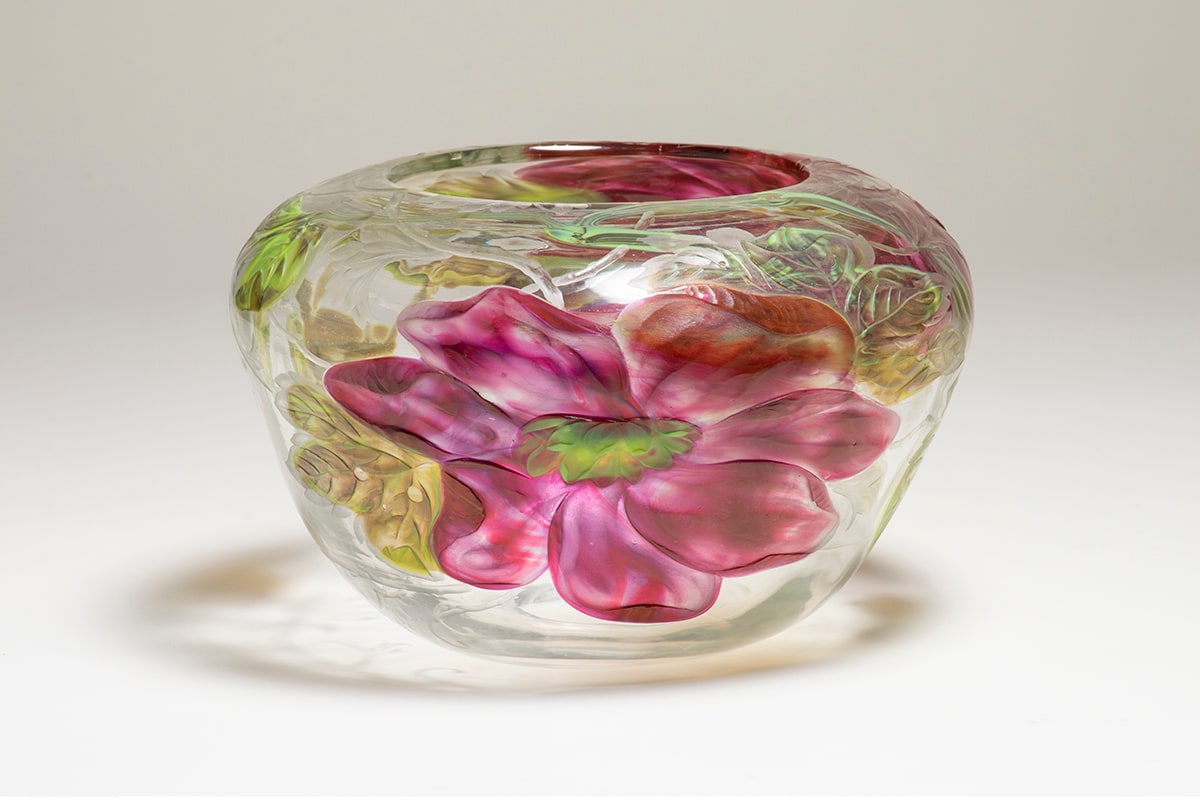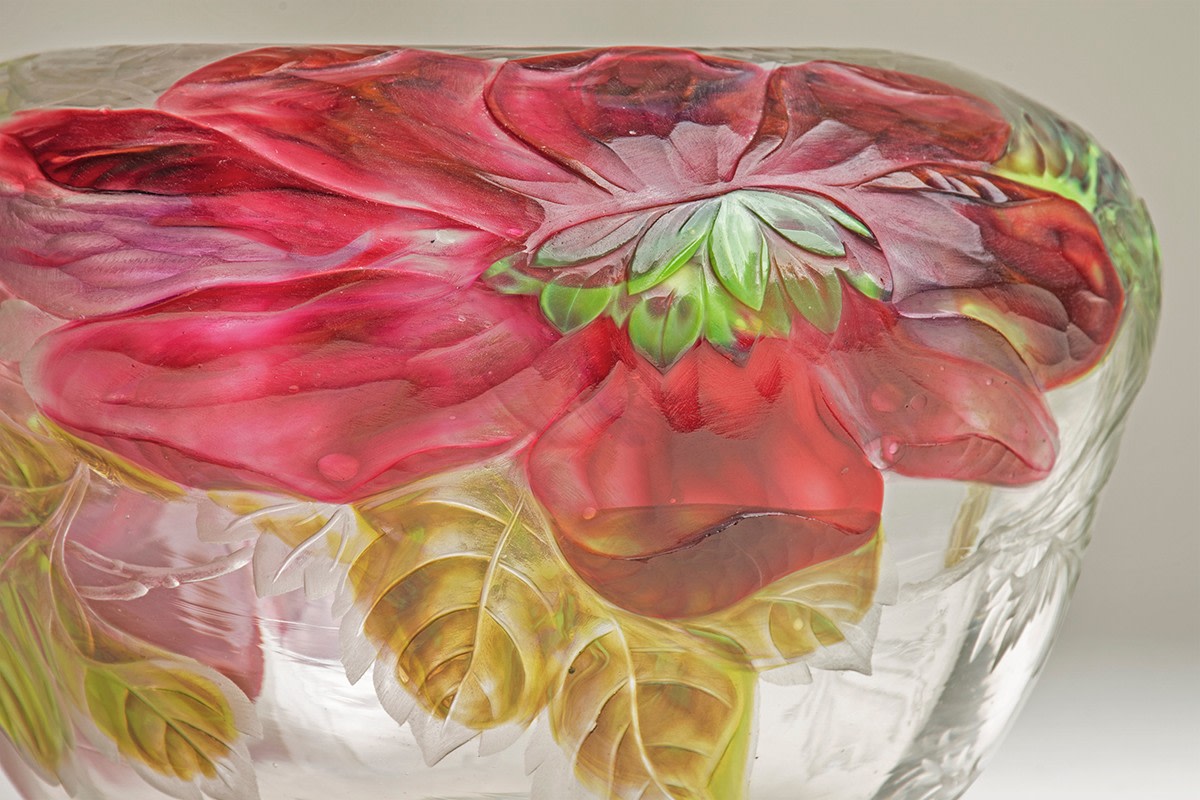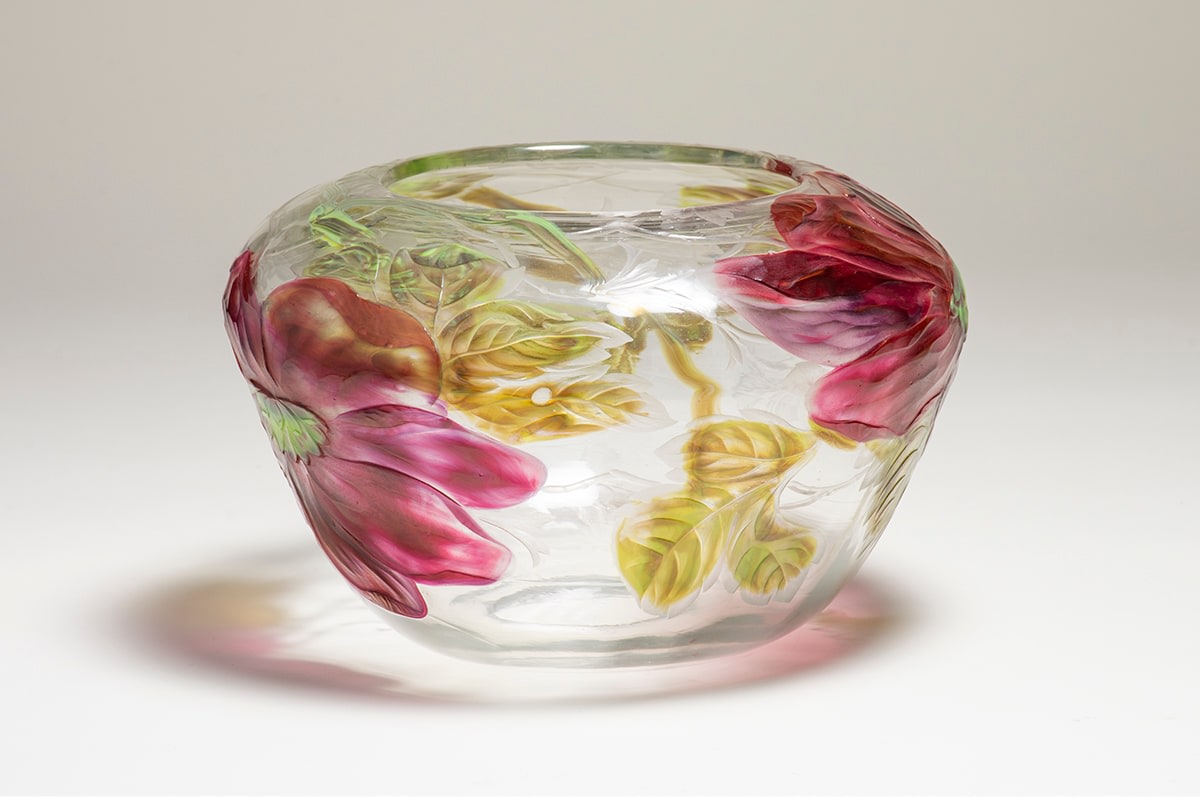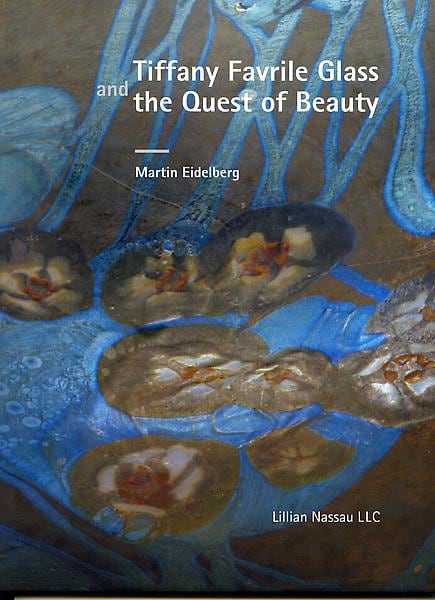This important Tiffany Favrile Glass Vase is one of a handful of related examples produced in the mid-1890s featuring exceptional wheel-carved floral decoration likely executed by Fridolin Kretschmann (sometimes spelled Kreischmann), an Austrian glass engraver who was hired by Louis Comfort Tiffany after his work was prominently featured at the World’s Columbian Exposition in Chicago in 1893. Kretschmann is widely regarded as one of the finest glass engravers working in Tiffany’s employ; his obituary in 1898 indicated that examples of his work in Favrile Glass could be found in the collections of some of Tiffany’s most important clients, including the Gould, Havemeyer, and Vanderbilt families.
This low, wide vase features a motif of large flowers in deep plum glass accented by subtle hints of orange and deep indigo, with vibrant green centers, surrounded by striated green stems and leaves, against a clear ground. The colored glass utilized for the flowers, stems and leaves is accented by particularly fine wheel-carved naturalistic detailing, including curling petals, veined leaves and textured bark. The clear body is decorated with with a subtle design of thin stems and leaves, while the majority of the background is left undisturbed.
The earliest known example from this important series was sold in March of 1898 by Siegfried Bing to the Osterreiches Museum fur angewandte kunst, Wien (now MAK Vienna - accession no. GL-1986). Bing, the proprietor of the influential gallery L’Art Nouveau, was a friend of Tiffany who served as his sales representative, placing important early examples of Tiffany Glass in some of the most prominent public and private collections throughout Europe. A second related vase is in the permanent collection of the Charles Hosmer Morse Museum of American Art in Winter Park, Florida (64-031), acquired by Hugh and Jeannette McKean around 1964. A third related vase was previously in the collection of influential Tiffany collectors Jay and Micki Doros.
The MAK, Morse, and Doros vases were all likely produced at the same time as the example offered here, as is reflected in the signature sequence and the matching coloration, indicating that these pieces were formed from the same batch of glass. However, there is a wide degree of variation in the style and degree of wheel-carving amongst these four examples; three feature more traditional glass cutting techniques, with gadrooned rims, heavily carved fluting on the bases, and elaborate scrolling or patterned motifs forming the background.
This vase is the most naturalistic of the known examples; the engraving exclusively enhances the flowers, leaves and stems. This restrained decoration and the clarity of the background glass allows the floral motif to serve as the focal point.
This important example of Tiffany glass is inscribed on the underside.
Height: 5 ½ inches (14 cm)
Diameter: 8 ¼ inches (21 cm)
References:
Paul Doros, The Art Glass of Louis Comfort Tiffany, New York, 2013, pp. 2 and 86
Rüdiger Joppien, ed., Louis C. Tiffany, Meisterwerke aus amerikanische Jugendstils, Cologne, 1999, p. 174, Kat. Nr. 85
Hugh McKean, The “Lost” Treasures of Louis Comfort Tiffany, New York, 1980, p. 172, fig. 1




